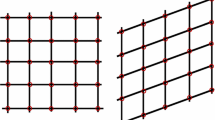Abstract
Significant progress has been made in the interpretation of isochromatic fringes in photo-orthotropic-elasticity. However, the isoclinic fringes have not yet been satisfactorily interpreted. While it has been recognized that the isoclinics do not give the principal-stress directions in the composite model, there has been speculation that the isoclinics may give the principal-strain directions.
An experimental study of the isoclinic fringes in orthotropic models was undertaken. The model material employed consisted of a transparent, unidirectionally reinforced, E-glass-polyester composite. First, the optical isoclinic parameters were measured in uniaxial stress fields for compression specimens as a function of the fiber-orientation angle. It was observed that, while the optical isoclinic parameter was different from the composite principal-stress angle, it was also different from the composite principal-strain angle. The optical isoclinic parameter was predicted very well by the Mohr circle of birefringence postulated by Sampson.
In the second set of experiments, the optical isoclinic parameter was measured in biaxial stress fields by testing a circular disk in diametral compression. The actual state of strain and stress at the center of the disk was measured by means of a rectangular strain-gage rosette. Again it was observed that the optical isoclinic parameter was predicted very well by Sampson's relation. Thus, the isoclinic fringes in orthotropic models can be satisfactorily interpreted and Sampson's scheme can be utilized to obtain the individual principal stresses in orthotropic models.
Similar content being viewed by others
Abbreviations
- E :
-
Young's modulus, psi
- f :
-
stress-fringe value, psi-in./fringe
- G :
-
shear modulus, psi
- L :
-
direction of major amount of reinforcement in the composite
- m :
-
shear-distortion factor
- T :
-
direction transverse to theL direction
- σ:
-
normal stress, psi
- τ:
-
shear stress, psi
- ε:
-
normal strain
- γ:
-
shear strain
- ν:
-
Poisson's ratio
- θ:
-
physical isoclinic parameter for the composite (stress)
- θε :
-
physical isoclinic parameter for the composite (strain)
- θf :
-
fiber physical isoclinic parameter
- θm :
-
matrix physical isoclinic parameter
- θ' :
-
optical isoclinic parameter for the composite
- ϕ:
-
angle between direction of diametral load on disk andL axis
References
Pih, H. andKnight, C. E., “Photoelastic Analysis of Anisotropic Fiber Reinforced Composites,”Jnl. Composite Materials,3 (1),94–107 (1969).
Sampson, R. C., “A Stress—Optic Law for Photoelastic Analysis of Orthotropic Composites,”Experimental Mechanics,10 (5),210–215 (1970).
Dally, J. W., andPrabhakaran, R., “Photo-orthotropic-elasticity,” Parts I and II,Experimental Mechanics,11, (8),346–356 (1971).
Prabhakaran, R., “On the Stress-Optic Law for Orthotropic Model Materials in Biaxial Stress-Fields,”Experimental Mechanics,15 (1),29–34 (1975).
Prabhakaran, R., “Stress-Strain Models for Photo-orthotropicelasticity,” to be published in the Journal of the Aeronautical Society of India.
Prabhakaran, R., “Photoelastic Analysis of an Orthotropic Ring under Diametral Compression,”AIAA Jnl.,11 (6),777–778 (1973).
Prabhakaram, R., andDally, J. W., “The Application of Photoorthotropic-elasticity,”Jnl. of Strain Analysis,7 (4),253–260 (1972).
Author information
Authors and Affiliations
Rights and permissions
About this article
Cite this article
Prabhakaran, R. The interpretation of isoclinics in photo-orthotropic-elasticity. Experimental Mechanics 16, 6–10 (1976). https://doi.org/10.1007/BF02328914
Received:
Revised:
Issue Date:
DOI: https://doi.org/10.1007/BF02328914




